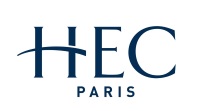No 1305: Fame as an Illusion of Creativity: Evidence from the Pioneers of Abstract Art
Banerjee Mitali () and Paul L. Ingram
Additional contact information
Banerjee Mitali: HEC Paris - Strategy & Business Policy
Paul L. Ingram: Columbia Business School - Management
Abstract: We build a social structural model of fame, which departs from the atomistic view of prior literature where creativity is the sole driver of fame in creative markets. We test the model in a significant empirical context: 90 pioneers of the early 20th century (1910–25) abstract art movement. We find that an artist in a brokerage rather than a closure position was likely to become more famous. This effect was not, however, associated with the artist’s creativity, which we measured using both objective computational methods and subjective expert evaluations, and which was not itself related to fame. Rather than creativity, brokerage networks were associated with cosmopolitan identities—broker’s alters were likely to differ more from each other’s nationalities--and this was the key social-structural driver of fame.
Keywords: fame; creativity; identity; creative markets; social networks; social structure
JEL-codes: Z11
46 pages, August 1, 2018
Full text files
papers.cfm?abstract_id=3258318 HTML file Full text
Questions (including download problems) about the papers in this series should be directed to Antoine Haldemann ()
Report other problems with accessing this service to Sune Karlsson ().
RePEc:ebg:heccah:1305This page generated on 2025-06-10 11:14:56.

